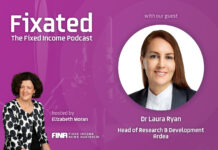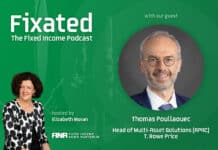
From PGIM Fixed Income
As anticipation towards tomorrow’s tariff announcement mounts, it remains unclear how the approach to reciprocal measures might unfold, e.g., whether they are blanket tariffs on all imports or more targeted towards countries and industries. Our broad expectation is that the initial reciprocation could pertain to the 15 countries specified by the U.S. Administration.
The announcement could also include long-term initiatives requiring more research with outcomes that may be specified at a later date. For those with tariff fatigue, this week could confirm the beginning stages of broad tariff negotiations, rather than marking the end stage of tariff talk.
With auto tariffs set to take effect this week we look at the potential job creation if all imported autos, i.e., 7.6 million units, were assembled in the U.S. For example, a 250,000 unit vehicle plant employs about 3,500 workers. Thus, the imported units divided by the plant capacity produces 30 plants at about 3,500 workers, or slightly more than 105,000 jobs. These positions could have a multiplier effect of 500,000 to 1 million jobs, and, for reference, total U.S. employment is more than 160 million workers. Tariff advocates may also point to the negotiating process that could create longer-term benefits as well as the revenue proceeds, which are said to be about $100B from the auto tariffs.
About 40-50% of domestically assembled autos contain imported content, and certain items, such as engines and transmissions, remain exempt under the USMCA trade agreement, which is under review. In general, we believe the auto tariffs may increase the effective cost of a new vehicle by 9-12% with a similar increase for used car prices.
Also read: Australian Economic View – April 2025 – Janus Henderson
Some clarification on the administrations tax agenda may also emerge this week in terms of the cost analysis. One basic approach is to use “current law” as the baseline, indicating that the prior tax reduction, i.e., the reduction in the stated corporate rate from 28% to 21%, amounts to a $4.5T cost. The other is to use “current policy” as the baseline, in which there is no cost, but certainly carries deficit implications. While implementation of the TCJA in 2018 may have cushioned some of the previous tariff-related price increases, this iteration of tax legislation is solely focused on extending the 21% rate rather than a further reduction.
DEVELOPED MARKET RATES
Considering the current, disorienting market backdrop, our rates comments are from a relatively high level. As has been the case since 2022, we expected developed market fixed income assets to continue earning their yield with an upside bias to performance, if and as growth disappoints. Furthermore, depending on the contours of a potential downturn, which is consistent with our thicker tail scenarios in the U.S., rates may fall more than credit spreads widen, acting as a buffer to risk product volatility.
We also anticipate that yield curves may steepen from here (as has also been the case since 2022). At this point, short rates may appear too high with central banks poised to cut rates, and long rates appear too low relative to short rates. Indeed, the long government space is one where investors frequently reassess the respective deficit and issuance dynamics, maintaining pressure on long-rate levels and potentially steepening yield curves.
Agency MBS spreads widened as risk-off sentiment continued and implied volatility increased. Average daily TBA origination increased slightly to ~$2.6B with 30-year 5.5% and 6% being the largest coupons produced. Convexity accounts resumed adding duration as Treasury yields declined, and there was also said to be heavy specified pool BWICs that surfaced last week.
































